Third Edition
William J. Murtagh
John Wiley & Sons, Inc.


To the members of the National Conference of State Historic Preservation Officers, whose collective efforts have been pivotal to the success of the National Historic Preservation Act of 1966.
ix
xiii
xvii
CHAPTER 1
CHAPTER 2
CHAPTER 3
CHAPTER 4
CHAPTER 5
CHAPTER 6
CHAPTER 7
CHAPTER 8
CHAPTER 9
CHAPTER 10
CHAPTER 11
CHAPTER 12
CHAPTER 13
CHAPTER 14
CHAPTER 15
EPILOGUE:
APPENDIX A
APPENDIX B
APPENDIX C
APPENDIX D

 t has been approximately seventeen years since the first edition of this book saw print and about eight years since the last soft cover edition. These years have been singularly unnotable in preservation, with none of the legislative activity that distinguished the 1960s and little of the educational and economic developments of the 1970s or the seminal technical amendments of the 1980s that ushered in new parameters: thinking about land, minorities, and the concerns of Native Americans in relation to their traditional culture. The 1970s saw the establishment of many preservation training programs in universities as well as changes in our tax structure that made historic structures financially recyclable for the commercial real estate development world. With increasing restrictions on these tax credits and the consequent reduction in economic attractiveness, their use all but disappeared in the late 1980s-but not before having energized massive rehabilitation projects across the country. These projects worked hand in glove with the then new attention to the Main Street program of the National Trust for Historic Preservation, focused on the commercial hearts of towns and cities alike.
t has been approximately seventeen years since the first edition of this book saw print and about eight years since the last soft cover edition. These years have been singularly unnotable in preservation, with none of the legislative activity that distinguished the 1960s and little of the educational and economic developments of the 1970s or the seminal technical amendments of the 1980s that ushered in new parameters: thinking about land, minorities, and the concerns of Native Americans in relation to their traditional culture. The 1970s saw the establishment of many preservation training programs in universities as well as changes in our tax structure that made historic structures financially recyclable for the commercial real estate development world. With increasing restrictions on these tax credits and the consequent reduction in economic attractiveness, their use all but disappeared in the late 1980s-but not before having energized massive rehabilitation projects across the country. These projects worked hand in glove with the then new attention to the Main Street program of the National Trust for Historic Preservation, focused on the commercial hearts of towns and cities alike.
Since 1998, the National Park Service reports what appears to be a stable use of the tax credit system at 1,000 to 1,200 projects per annum, representing investments in restoration and rehabilitation of approximately $2 billion per year. This would indicate that big developers are syndicating large projects using the tax credit system in such examples as Rockefeller Center and Radio City Music Hall in New York; the Ferry Building and the Embarcadero in San Francisco; and the Atlantic City Convention Hall in New Jersey.
University degree programs, combined with the entrepreneurism that the tax credit system injected into the field, have collectively led to the emergence of a managerial cum business-oriented preservation practitioner heretofore unknown in American mainstream preservation. Add to this development the preservation planning concept introduced with the establishment of the first historic district in Charleston, South Carolina, as early as 1931. The more recent recognition (and flourishing) of cultural heritage corridors, areas consisting of massive land areas to which conservation-oriented environmental concerns are applied, adds yet another dimension. The result is a broad, multifaceted preservation involvement, touching a greater base of American society than ever before.
In the downsizing economic era we are now experiencing, with the attendant withdrawal of public monies to which the preservation field has become accustomed, younger preservationists may feel threatened by a potential loss of job/professional opportunities in the field. Such need not be the case, although, admittedly, the spots of opportunity may change. Preservationists who worked in the field prior to 1966 know that the private sector historically fueled the mainstream of preservation in our country long before government saw fit to join the dance. Yet even if preservation activities were to return once more to a primary reliance on the private sector for financial support, the preservation picture would still not be as it was before 1966, for two reasons. The first is the check-andbalance system formed by Section 106 of the National Historic Preservation Act, which created and requires the Advisory Council on Historic Preservation to consider federally funded or licensed threats to cultural property on the National Register of Historic Places. The second is the National Conference of State Historic Preservation Officers, the group of governor-appointed preservation representatives and their staffs in each state and territory of the United States. Irrespective of whether they are locally perceived to function satisfactorily or not, they exist, and the preservation of our national heritage is the better for it. What is more important however, is that the preservation ethic appears to have become internalized in a broader base of American society than ever before, tied as it is in most minds to a search for cleaner and better-looking environments in which to work and live.
One final observation on the impact of the National Historic Preservation Act of 1966 is in order now that forty years have passed since its passage by the Congress of the United States. Prior to 1966, the private sector was the primary engine which drove the preservation movement while government's vision focused on conservation of open land and the development of the world-class national parks system we enjoy today. Not only did the private sector exercise leadership through money, interest and energy, but it provided the nascent preservation movement with a personality base upon which it operated, whether through philanthropy or through the rare opportunities for employment in what was then, in most respects, a national volunteer effort. Ann Pamela Cunningham, the savior of Mount Vernon; John D. Rockefeller, Jr., and Williamsburg, Susan Pringle Frost, initiator of Charleston, South Carolina's historic district; and Emily Edwards, founder of the San Antonio Conservation Society in Texas, all come to mind. Even at the national level, early in the development of the National Trust, this private sector personality leadership would have named Helen Bullock, paid historian of the Trust due to her constant travel, speaking engagements, and representation of the organization at meetings and conferences. All of this essentially changed with the passage of the National Historic Preservation Act in 1966, after which a system of law and regulations replaced private individual personality recognition in the identification of what preservation is and how it functions. The Keeper of the National Register of Historic Places, the Director of the Advisory Council on Historic Preservation, the Director of the National Conference of State Historic Preservation, Officers, and the network of State Historic Preservation Officers, for example, are now components of an established system more important for name recognition than the incumbents who head up the individual parts of the system. This is not to say that the traditional generosity of the private donor to preservation, so unique to this country, has ceased and disappeared. Such is not the case. They and their support are more important than ever. However, the 1966 legislation made the conservation-conscious public sector more strongly concerned for the preservation of the man-made environment, setting the stage for the cementing of the public and private sectors in this interest to a degree heretofore not observable since the founding of the National Park Service. That was in 1916 when the first director, drawn from private industry to head up the then new Interior bureau, personally and financially underwrote the costs of things he felt important to achieve in order to get the new program off the ground.

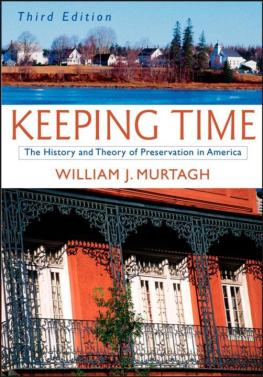

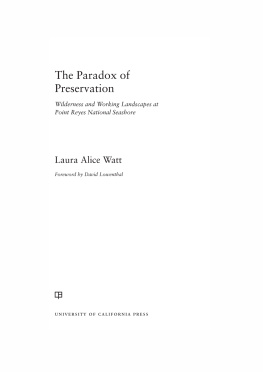


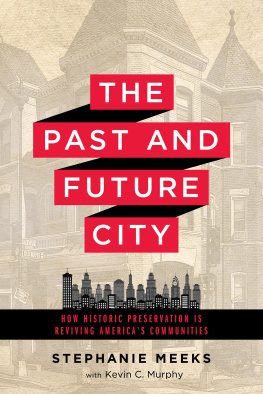
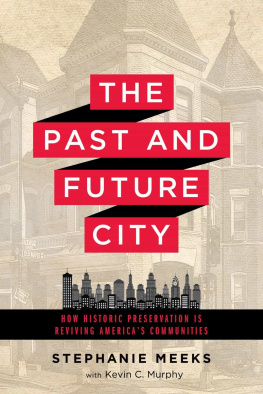
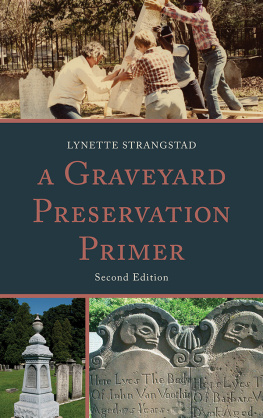


 t has been approximately seventeen years since the first edition of this book saw print and about eight years since the last soft cover edition. These years have been singularly unnotable in preservation, with none of the legislative activity that distinguished the 1960s and little of the educational and economic developments of the 1970s or the seminal technical amendments of the 1980s that ushered in new parameters: thinking about land, minorities, and the concerns of Native Americans in relation to their traditional culture. The 1970s saw the establishment of many preservation training programs in universities as well as changes in our tax structure that made historic structures financially recyclable for the commercial real estate development world. With increasing restrictions on these tax credits and the consequent reduction in economic attractiveness, their use all but disappeared in the late 1980s-but not before having energized massive rehabilitation projects across the country. These projects worked hand in glove with the then new attention to the Main Street program of the National Trust for Historic Preservation, focused on the commercial hearts of towns and cities alike.
t has been approximately seventeen years since the first edition of this book saw print and about eight years since the last soft cover edition. These years have been singularly unnotable in preservation, with none of the legislative activity that distinguished the 1960s and little of the educational and economic developments of the 1970s or the seminal technical amendments of the 1980s that ushered in new parameters: thinking about land, minorities, and the concerns of Native Americans in relation to their traditional culture. The 1970s saw the establishment of many preservation training programs in universities as well as changes in our tax structure that made historic structures financially recyclable for the commercial real estate development world. With increasing restrictions on these tax credits and the consequent reduction in economic attractiveness, their use all but disappeared in the late 1980s-but not before having energized massive rehabilitation projects across the country. These projects worked hand in glove with the then new attention to the Main Street program of the National Trust for Historic Preservation, focused on the commercial hearts of towns and cities alike.